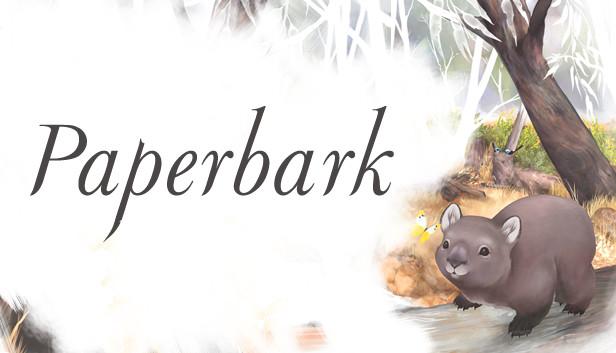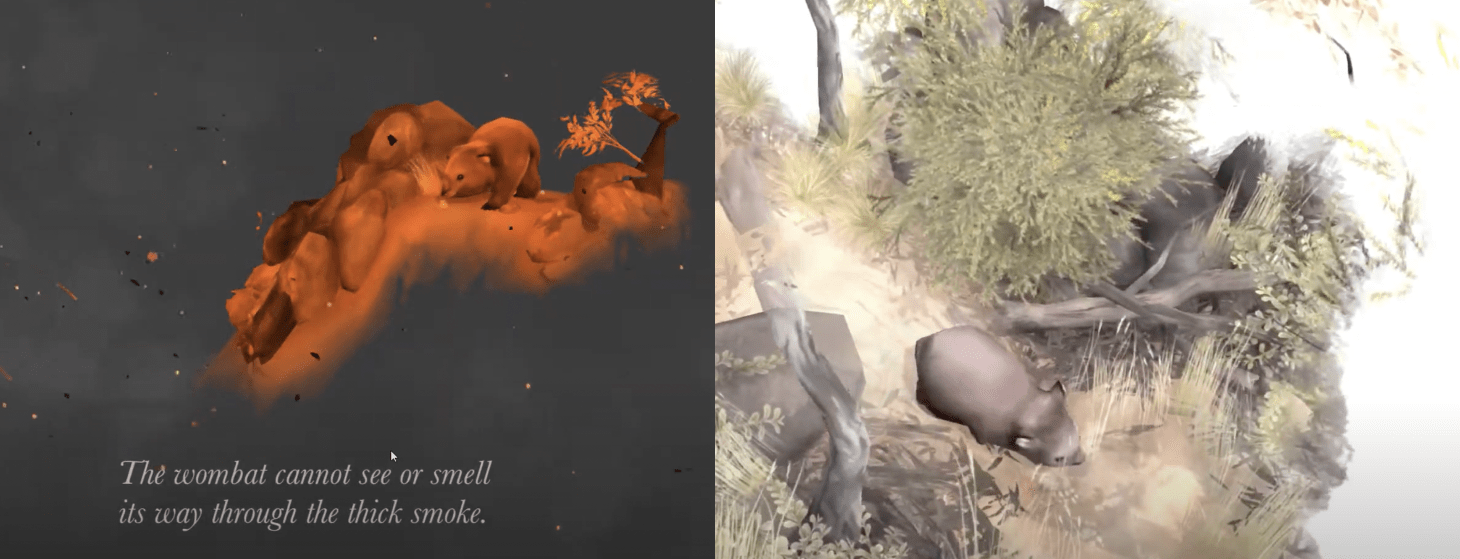
Created by Paper House , Available on Steam
The game is a walking sim about a young wombat wandering around in the Australian brush who gets caught in a fire.
Target Audience
The game is targetted at pretty much anyone, as there aren’t complicated skills required or adult themes that would prevent a younger audience from playing or too light of a story that an adult audience wouldn’t be engaged. An interesting part of the game description is that “the game has been created as a love letter to wandering through the bush and will resonate with anyone who grew up in Australia or is interested in it.” The audience is not restricted to Australians but might strike a deeper chord with them than others as they play the game.
Important Formal Elements of the Game
The game is intended to be single-player. There is only one character who you are following: the wombat.
The main game mechanic is moving your mouse around the screen to make the wombat walk and having the landscape be unveiled in a watercolor style. At first, the unseen parts of the map are just white, and it seems that they represent the wombat’s limited knowledge of what’s out there. Typically the locations stay solid after the wombat passes through. However, this shifted when the wombat was facing the danger of the fire. Instead of white, the screen had dark patches to represent smoke and even once you walked through an area it would just disappear again. The walking here was enhancing the story because this mechanic helped highlight how uncertain and overwhelmed the character must be feeling. The change in gameplay also made it so that you would get lost more, retrace your steps, etc., all like the wombat would in real life during a wildfire.

The game does not have levels but instead unfolds in chapters, new ones revealed as you walk. It feels very natural and not as time pressured or driven as other games. Furthermore, though there are little items to collect as you walk, there are no XP bars, no enemies, and no mini-games. The little items exist to move you along and give you a little direction as you walk, they are not the object of the game. The object is just to see the whole situation play out.
Type of fun game intended
I think that this game focused on narrative as the main type of fun. It was clearly meant to engage the reader’s curiosity of what might happen next, but in a way that was not overwhelmingly stressful. The game had elements of conflict, but also delight. I think that the goal was met by this game, but could have been met better if there was slightly more plot. The story and voiceovers were pretty sparse, I would have loved to hear more.
Moments of particular success or epic fails
I think that the main moments of success for me were: 1) the ingenious flipping of the walking/revealing landscape mechanic during the smokey part of the game (discussed above) and 2) the fact that the game didn’t end on a depressing note. It felt hopeful, it felt peaceful, even though there had been a conflict and moments of tension.
Things you would change to make the game better
I think that the interactions with the other animals in the game could have been deeper. What if they were the ones telling the story, not a disembodied voice? Would that lend itself to keeping the story contained within nature and not breaking the player out of the experience as much?


